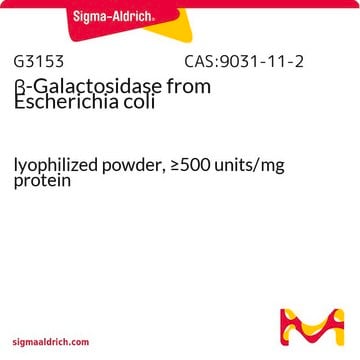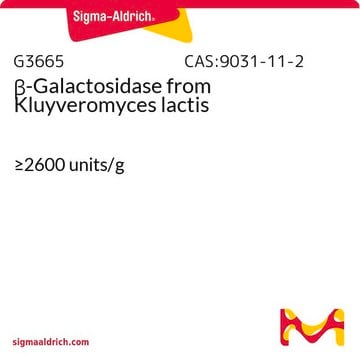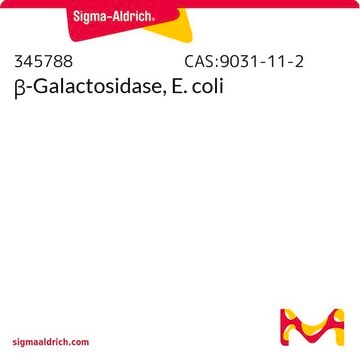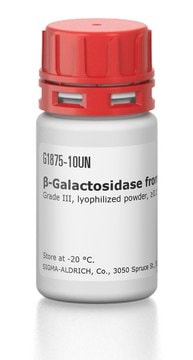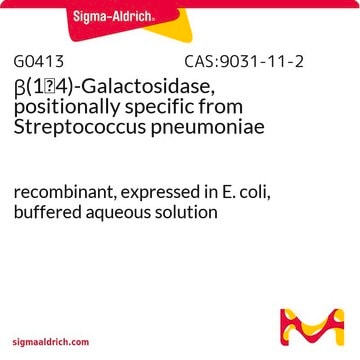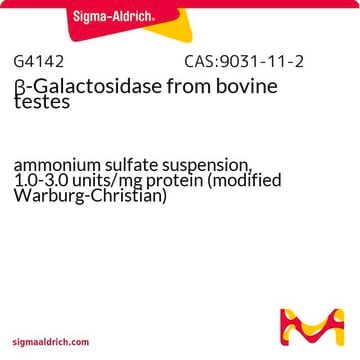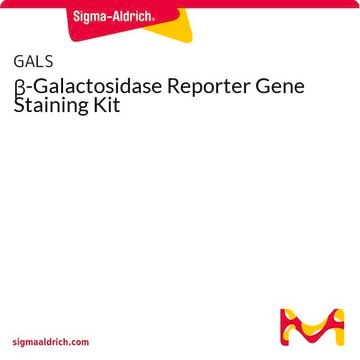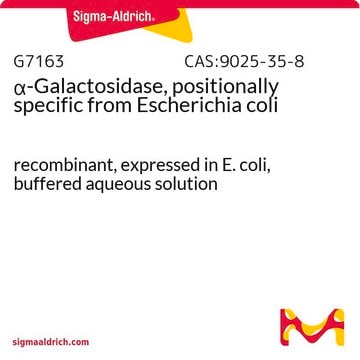10105031001
Roche
β-Galactosidase
from E. coli overproducer
Synonyme(s) :
β-galactosidase
About This Item
Produits recommandés
Source biologique
Escherichia coli
Niveau de qualité
Forme
suspension
Poids mol.
540 kDa
Conditionnement
pkg of 1,500 U
Fabricant/nom de marque
Roche
Concentration
5.00 mg/mL
Technique(s)
activity assay: suitable
pH optimal
7
Adéquation
suitable for UV spectrophotometry and general use
Application(s)
life science and biopharma
Conditions d'expédition
wet ice
Température de stockage
2-8°C
Description générale
Spécificité
Application
Qualité
Forme physique
Notes préparatoires
In the absence of ammonium sulfate, solutions of β-galactosidase should be stabilized with Mg2+ (89 mM) and a thiol reagent (1mM β-mercaptoethanol, 1 mM dithiothreitol) [Beutler, 1984]. The thiol slows the formation of enzyme dimers resulting from intramolecular disulfide bridges.
Activator: K (50 mM) is required for activation (lactose hydrolysis).
Na (50 mM) is also an activator, particularly for hydrolysis of 2-nitrophenyl-β-D-galactopyranoside.
Autres remarques
Code de la classe de stockage
12 - Non Combustible Liquids
Classe de danger pour l'eau (WGK)
WGK 1
Point d'éclair (°F)
No data available
Point d'éclair (°C)
No data available
Certificats d'analyse (COA)
Recherchez un Certificats d'analyse (COA) en saisissant le numéro de lot du produit. Les numéros de lot figurent sur l'étiquette du produit après les mots "Lot" ou "Batch".
Déjà en possession de ce produit ?
Retrouvez la documentation relative aux produits que vous avez récemment achetés dans la Bibliothèque de documents.
Les clients ont également consulté
Notre équipe de scientifiques dispose d'une expérience dans tous les secteurs de la recherche, notamment en sciences de la vie, science des matériaux, synthèse chimique, chromatographie, analyse et dans de nombreux autres domaines..
Contacter notre Service technique


